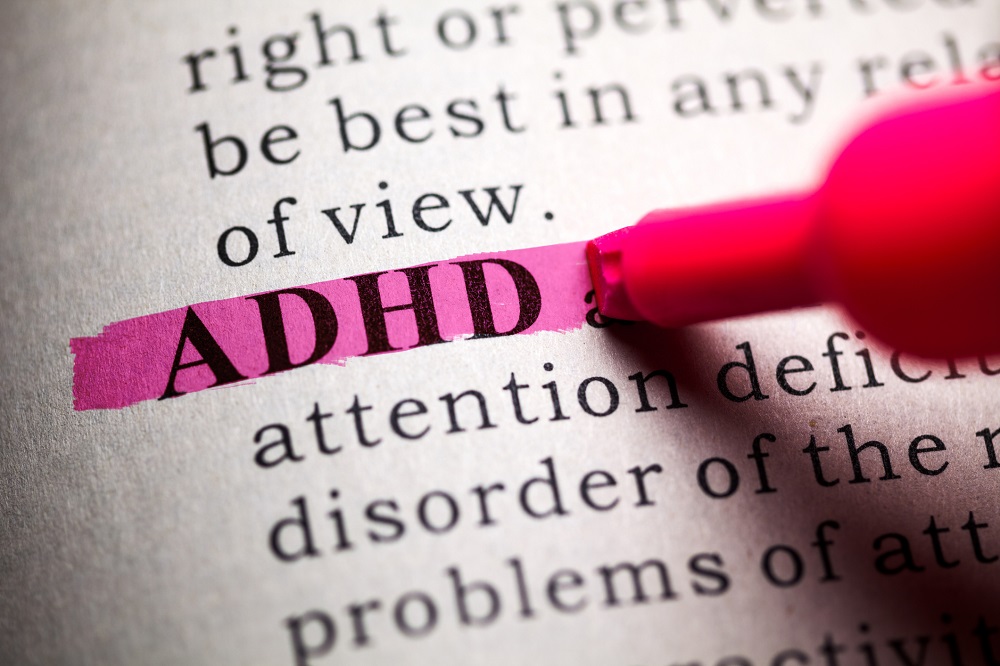ADHD in the classroom
How much do you know about SEND? Do any of your students have ADHD? In this post, Michelle reveals more about the disorder, which is considered to be the most common neuropsychiatric condition in children, and how is characterized by persistent patterns of inattention, disorganization, impulsivity and hyperactivity, before looking at how you can help those learners in the classroom.

A little while ago, when I was in the midst of teaching a big group of pre-service teachers, we started talking about all the different aspects of teaching and just how many fields teaching involves. As a lecturer in education, I suddenly saw myself wearing my counsellor hat and answering questions not so much about language teaching or education but more about neurodiversity as many of my students have ADHD (Attention Deficit Hyperactivity Disorder). Then I realised that we don’t often talk much about ADHD in the English class, so I thought I’d write a blog post as a starting point for teachers that like myself didn’t get to study about that in their initial teacher education courses.

What is ADHD?
ADHD is a neurodevelopmental and multifactorial disorder, which is also described as a developmental self-control disorder, whose central problem is the inhibition of behaviour (Pelham et al., 2016). It is characterized by persistent patterns of inattention, disorganization, impulsivity and hyperactivity. These signs are present in at least two different contexts such as home and school and interfere substantially in the social functioning and development of the individual (Goldstein & DeVries, 2017).
ADHD is often considered the most common neuropsychiatric condition in children (Ray, Evans & Langberg, 2017). In relation to formal education, it is recognized that children with ADHD have different educational needs. Gwerman et al. (2016) showed that the potential stigma for children with ADHD seems natural and even certain in the school context, which can lead to risks of exclusion of these children.
As ADHD is a multifactorial disorder, it requires diverse types of interventions from varied actors. Barkley (2014) suggests a triangular model of co-operative guidance in which counsellors work with both educators and family in a systematic way in the assessment, planning and execution of interventions.

More people with ADHD = teachers need more information
With the growing increase in cases of ADHD worldwide (possibly because we are talking more about rather than the numbers of cases increasing perse), it is important to seek educational solutions with a continuous and systematic focus (Davidovitch, et al., 2017). An example of potential solution is the implementation of teacher training programs that combine preventive and remedial approaches in order to inform teachers’ practice. The adoption of teacher training is likely to assist children in their studies by providing both teachers and students with techniques, which could potentially decrease the rates of school failure and dropout (Du Paul & Stoner, 2007).
In terms of management, children with ADHD characteristics need a very well-structured classroom environment, in which they know exactly what to expect, from the moment they arrive until the time they return home. Teachers must implement both preventive and remedial approaches so that they can obtain greater control of the educational context without neglecting the specific needs of these students. (Rief, 2005)
Teachers need to show careful, attentive and even pro-active behaviour to certain characteristics of the environment such as the organization of desks and chairs, in addition to controlling the positioning of each student in the classroom. Another idea is to present positive expectations regarding students' behaviour, establish well-defined rules and routines and implement positive reinforcement strategies in order to drive motivation and the manifestation of appropriate responses and desirable behaviours/actions. (Pfiffner & Dupaul, 2014)

Dealing with ADHD
One of the important things we need to be aware of about students with ADHD characteristics is that they need to be continuously monitored. Social reinforcers coming from the teacher such as an approving look, a compliment or a positive sign can increase the likelihood of results expected by the teacher. Rief (2005) recommends that teachers pay attention, recognize and reinforce desirable behaviours. However, it is more common to see students with ADHD characteristics being reprimanded for unwanted behaviour or violations of classroom rules. These students need to have, in the classroom, opportunities to choose from the proposed tasks and forms of assessment. The use of educational materials that provide positive reinforcement such as certificates, stars and stickers are also recommended. In saying that, I need to acknowledge that all these (good?) ideas require extra time and preparation – so it can be overwhelming for a single teacher to handle it all. My suggestion is for teachers to work together to develop resources/routines that can be used by all the teaching group.
Teachers should also be prepared to deal, individually, with undesirable or inappropriate behaviours to the classroom context. Therefore, Rief (2005) suggests the following measures:
- calm conduct, showing emotional control;
- the teacher's immediate reaction to behaviour considered inappropriate;
- use of a hierarchy of mild punitive consequences to negative behaviour, making it clear that this student's behaviour, and not the student itself, is being penalized;
- quick and direct communication between the teacher and the student.
Honos-Webb (2005) proposed a program with the objective of channelling the energy, curiosity and interest of children in ADHD towards the development of specific interests, social relationships, creative skills and academic commitment. Honos-Webb suggested a variety of exercises that can help the student understand the strength of their thoughts and the impact of their choices on academic and social success or failure. The common thread in these activities is that they simulate stories and, through imagination, work on the determination and attitudes that favour successful responses both in the academic and in the family context. If you would like to know more about ADHD, I suggest following this free (unless you upgrade) Understanding ADHD: Current Research and Practice MOOC course by the King's College London.

Lack of persistence
The lack of persistence in performing a task is one of the most common characteristics in individuals with ADHD. However, this should not be perceived as negative because students with ADHD are often particularly curious and have profound interest in certain areas of knowledge. Therefore, these individuals can be highly motivated and productive if engaged in matters of self-interest (Honos-Webb, 2005). It is recommended to work in an area of interest, even if, at first, the material means distraction for the student or if the interest is not so related to the academic content being used. In addition, educators and parents must remember that the child with ADHD needs to be connected with the world around them and, consequently, the learning needs to involve all the senses, the concrete and experimentation.
As language teachers, I feel it is important to mention the perspective of communication theory to ADHD. Communication is the element that unites individuals, family and society. All behaviour verbal and non-verbal, individual or in group has a communicative value in a process of understanding the multiple possibilities of meanings and senses. So, communication with the ADHD child must be clear, frank and direct.

Whole person
It is important that teachers perceive the child with ADHD as a person who has potential that may develop and recognize their role and responsibility in this process. Teachers (hopefully supported by counsellors/psychologists/support team) should learn how to take advantage of the child's interests by creating everyday situations that motivate them. By working together, the child will be better equipped to navigate the ups and downs of ADHD both as a child and into adulthood.
References
Barkley, R. A. (2014). Attention-Deficit Hyperactivity Disorder: A Handbook for Diagnosis and Treatment, Fourth Edition. London: Routledge.
Davidovitch, M., Koren, G., Fund, N., Shrem, M., & Porath, A. (2017). ‘Challenges in defining the rates of ADHD diagnosis and treatment: trends over the last decade’. BMC pediatrics, 17 1:218. London: Springer Nature.
DuPaul, G. J., & Stoner, G. (2015). ADHD in the Schools Assessment and Intervention Strategies. Third Edition. New York: Guilford Press.
Goldstein, & DeVries. (2017). Handbook of DSM-5 disorders in children and adolescents. London: Springer Nature.
Gwerman, J. R., Moore, D. A., Cooper, P., Russell, A. R., Richardson M., Morwenna R. Garside, R. (2016). ‘A systematic review and synthesis of qualitative research: The influence of school context on symptoms of attention deficit hyperactivity disorder’. Emotional and Behavioural Difficulties, 21, 83–100. London: Taylor & Francis Online.
Honos-Webb, L. (2005). The gift of ADHD. Oakland: New Harbinger Press.
Pelham, W. E., Fabiano, G. A., Waxmonsky, J. G., Greiner, A. R., Gnagy, E. M., Coxe, S. ... Murphy, S. A. (2016). ‘Treatment sequencing for childhood ADHD: A multiple-randomization study of adaptive medication and behavioral interventions’. Journal of Clinical Child and Adolescent Psychology, 45 4:396–415. London: Taylor & Francis Online.
Pfiffner, L. & Dupaul, G. (2014). Treatment of ADHS in school settings. Attention-deficit hyperactivity disorder, fourth edition: A handbook for diagnosis and treatment. New York: Guilford Publications.
Ray, A. R., Evans, S. W., & Langberg, J. M. (2017). ‘Factors associated with healthy and impaired social functioning in young adolescents with ADHD’. Journal of Abnormal Child Psychology, 45 5:883–897. London: Springer.
Rief, S. F. (2005). How to reach and teach children with ADD/ADHD: Practical techniques, strategies and interventions. Hoboken: Jossey-Bass Wiley.

Comments
Write a Comment
Comment Submitted